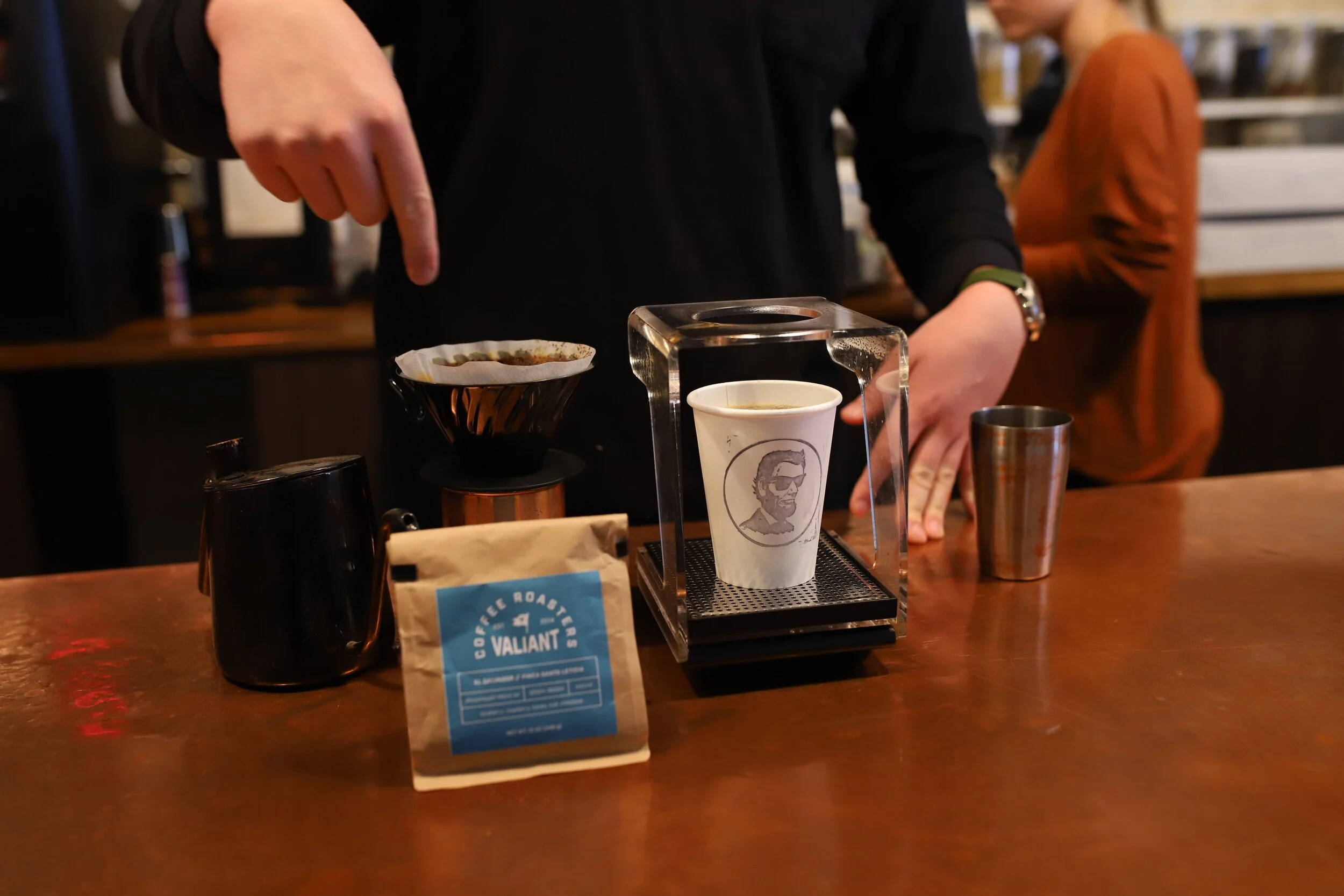Author: Will Anderson
There is a long list of things we have had to sacrifice lately – delicious coffee shouldn’t be one of them. This extra time at home has allowed people to engage in new things that may not have been a possibility during the busyness of life a few months ago. Which means that now, more than ever, is the time to harness the hobby of home brewing.
A great place to start is a pour over on the V60. Regardless of your experience level, the V60 is a household name in specialty coffee and familiarity with it will only grow your love for coffee and expand your ability as a barista.
We’ll begin with the tools of the trade. You’ll need a V60, a gooseneck kettle, V60 filters, a scale, a timer, freshly roasted and ground coffee, and a pour over station or mug that can support the V60.
For this brewing method, start by bringing the water to a boil. Next place your filter in the V60 and rinse it with hot water to purge the filter of any papery taste that might impact the final flavor of the coffee. Make sure to discard the water used to rinse the filter from whatever vessel you are brewing into before initiating the brew.
Now, measure out the coffee and grind it. This recipe calls for 30 grams of coffee. As far as grind goes, the size should replicate table salt, although the best way to dial in your grinder is to assess the time it takes the water to pass through the coffee during the brew. When executed correctly, all the water will have passed through the coffee in approximately four minutes, leaving a flat bed of grounds at the bottom of the filter. Adjust accordingly to make sure your extraction ends as close to four minutes as possible. Coarsen the grind to speed up the rate at which the water passes through the coffee or make the grind finer to slow it down.
Onto the most exciting part of the process - the bloom, the pour and the consumption. This is where the touch of the barista truly comes into play. The bloom is the first pour, helping saturate the grounds and setting the foundation for the entire cup of coffee. Perform this by placing the V60 and its filter on its stand with your mug underneath. Tare the scale after you have placed your coffee grounds in the filter.
For the bloom we will pour in 60g of water – start your timer right when the first drop of water touches the grounds. Let the coffee bloom for 45 seconds. Notice that the amount of water in the bloom is double the weight of the coffee that we started with. This is a universal principle for the bloom, and will be applied to most pour over recipes you come across.
Once the bloom is complete, finish the brewing process by executing three more pours each at 90g of water. Let five seconds pass between the pours. For the final pour, you will only need 70g of water to reach the desired 400g mark. What is most important here is ensuring that your scale reads 400g, not if each individual pour measures out to precisely 90g.
While integrating the water into the coffee, consistency is key. You want to pour in concentric circles while keeping the flow rate as uniform as possible with little to no variation in the distance from the end of the kettle to the V60. This takes lots of muscle memory so have patience if it proves difficult at first – your capability will only increase as you practice.
So now, if you upheld your end of the deal, there is a scrumptious cup of coffee in front of you. Remember that this is just a recipe we use. Coffee is complex and it becomes really entertaining when you start experimenting with various beans and ratios to find a flavor profile that best suits yourself. Don’t settle here with this guide, but use it as a foundation to make the method your own!








